| Botanical Name |
|
| Family |
Asteraceae - The daisy family. |
| Pronunciation |
hel-ih-KRY-sum pet-ee-OH-lair-ee |
| Common Name(s) |
English: Silver Bush Everlasting; Licorice plant
IsiXhosa: Imphepho; ubuhlungu
IsiZulu: Imphepho; ubuhlungu
|
| Plant Group |
- Shrub A woody plant of relatively low height, having several stems arising from the base and lacking a single trunk; a bush.
|
| Plant Size |
- Small to Medium
| Tree | 8m to 15m |
| Shrub | 75cm to 1m |
| Perennial/ground cover | 20cm to 40cm |
| Bulb | 30cm to 40cm |
| Succulent | 20cm to 40cm |
- Small
| Tree | 4m to 8m |
| Shrub | 50cm to 75cm |
| Perennial/ground cover | 10cm to 20cm |
| Bulb | 20cm to 30cm |
| Succulent | 10cm to 20cm |
|
| Position |
- Dry Shade Shady areas where soil has poor water retention or are dependent on rain for their moisture needs.
- Light or Dappled Shade Found below trees with sparse, open foliage. Ideal for the protection of herbaceous plants.
- Partial Shade The area is in shade for part of the day and in full sun for part of the day.
- Sun The area is in full sun for all or most of the day, all year round.
|
| General Information |
- Drought Tolerance: High The plant is well adapted to arid conditions; it can survive long periods of drought and high temperatures without extra water.
- Evergreen Plants that have leaves all year round.
- Frost: Tender A plant that will not survive any frost or low winter temperatures.
- Water Wise Plant species originating from low rainfall regions that require less water to survive and thrive than other plant species.
- Wind Tolerant Plants able to withstand the effect of strong winds.
|
| Specific Information |
Helichrysum petiolare is grown for its silvery, densely-felted, aromatic foliage and trailing habit. A soft, vigorous, woody-based sub-shrub, it grows to half a meter tall and spreads to a diameter of about a meter. It flowers in its second year. A slight licorice aroma may emanate from the foliage in the heat of the summer. It is short lived and needs replacing every 2 years. In cold climates it can be grown as an annual but it will not reach the size of plants that have grown for more than one season. Cultivars with variegated and chartreuse leaves are available.
Helichrysum petiolare is listed as an invasive weed in the state of California (USA), where seedlings have escaped from gardens.
|
| Ad Break |
|
| Flowers |
| Description |
profuse heads of tiny flowers on long stalks
|
| Season |
- Summer Plants will seldom bloom for the entire season as given in the list, but should flower during a period within these parameters.
|
| Colour |
|
| Growth Rate |
- Fast Specifying growth rate can be very misleading as there is considerable variation of growth rate depending on type and species of plant, available water, supplementary feeding, mulching and general care, as well as the plants suitability and adaptability to the garden environment.
|
| Plant Uses |
- Container Trees, shrubs and ornamental species that can adapt to growing in a restricted environment.
- Filler Either a fast growing tree or shrub used temporarily to fill in an area while the permanent plants grow to a desired size, or a plant used to fill gaps in borders or beds.
- Foliage Plant Plants grown because their foliage is colorful or unique. Many of these plants have insignificant flowers.
- Ground Cover Low-lying plants that spread fast, require minimal maintenance, and cover large expanses or bare areas between bulbs or shrubs. They provide protection from erosion and drought and improve the visual appearance of the garden.
- Pioneer for new gardens A very fast growing plant, able to withstand hardship, that can be used to populate land that has recently been cleared of natural vegetation. These plants pave the way for slower-growing species by adding nutrients to the soil and creating leaf litter.
- Retaining Walls Shallow rooted plants for cascading over dry stone walls or planting in hollow spots in retaining blocks.
- Rock Garden An area constructed of larger rocks, arranged naturally, to emphasise the use of stones as a main element. Generally plants used do not need a lot of care.
- Stabilize Banks Plant is used to prevent soil erosion because their roots will form a mat that stabilizes the soil and keeps it from washing away in heavy rains.
- Suitable for coastal gardens Plants adapted to dry, sandy soil, forceful wind, limited rainfall and intense sunlight.
|
| Distribution and Habitat |
Western Cape (Cederburg and Jonkershoek Mountains), Eastern Cape and Kwazulu-Natal, in the drier inland parts, on sheltered slopes and along forest margins
|
| Planting Suggestions |
Kooigoed is best planted in full sun in well-drained soil and is tolerant of poor soils. It spreads rapidly and should be cut back lightly at regular intervals, rather than cutting back to dead wood at the end of the season, when it may not easily recover . Helichrysum petiolare requires occasional to infrequent irrigation and seems to thrive on a lack of care. More regular watering may be needed in hot, dry inland regions. The plant is susceptible to root rot in poorly drained soils. This plant can be propagated from cuttings or from seed sown in autumn (March).
|
| Medicinal Uses |
Helichrysum petiolare is popular medicinal plant used to treat ailments such as coughs, colds and infections. The leaves are used by Rastafarians to make an infusion to treat asthma, chest problems and high blood pressure. The smoke of the burning leaves is inhaled as a pain reliever. The leaves are also widely used on wounds to prevent infection.
The Khoikhoi used the leaves and flowers as bedding, hence the name 'kooigoed', translated as 'bedding stuff'. This mattress was soft, had a pleasant smell and is thought to have deterred vermin. A pleasant and effective insect repellent against flies and mosquitoes can be made by burning a mixture of the leaves of Helichrysum and Artemesia afra.
|
| Ad Break |
|


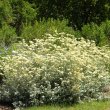
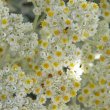
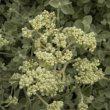
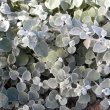
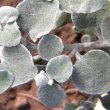
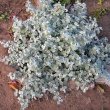
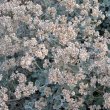
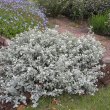


Comments
Helicrysum petiolare
can I grow H. petiolare in a high rainfall area in the Northern Rivers area of NSW Australia. I need a fast and dense ground cover over a fairly steep bank, therefore should be low maintanance.
Helichrysum petiolare
Hi Gisela
I don't think I would recommend this species for a high rainfall area. It thrives best in very dry conditions and the high humidity would possibly cause problems with fungal growth. However, I have come across two hybrids that seem to be able to tolerate more moisture, namely 'Liquorice Splash' and 'Limelight'. Also consider that this is a short lived plant and would have to be replaced after a couple of years. There are so many fast growing ground covers that thrive in wet conditions that you could use in its place. Plectranthus immediately comes to mind. I am pretty sure they are available in Australia and there are many low-growing species that would perform even better than Helichrysum. They also flower profusely and last for years.
Hope you find something useful
Lorraine
Helichrysum Petiolare
Can Helichrysum Petiolare be ingested as a tea?
Discuss this plant
Share knowledge, ask a question or give an experience.